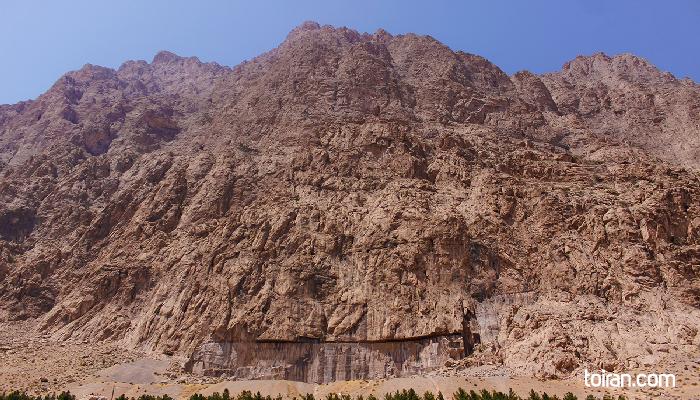Farhad Tarash, which means carved by Farhad in the Persian language, is a slab approximately 180 meters long and 33 meters high located west of the Darius I relief. Archeologists believed this enormous slab, which is comparable to the Darius I inscription at Bisotun, was prepared for a Sassanid (224-651 CE) relief but was never used for unknown reasons.
Some historians say this wall was carved so that Darius I could have his will inscribed on it. Others say the slab was prepared so that Darius I could have the scene of his victory over the Greeks immortalized but the rebellion of Egypt, the defeats in the Battle of Athos and the Battle of Marathon and finally death prevented such a relief from being created.
Another theory about this slab is that Sassanid king Khosrow II (570-628 CE) ordered its creation nearly 1,000 years after the death of Darius I. this theory is supported by local legend and the literary works of different writers.
According to legend, a sculptor named Farhad fell in love with Shirin, who was the object of King Khosrow’s desire. Upon learning about Farha’s feelings, the king exiled his love-rival to the Bisotun Mountain with the impossible task of carving stairs out of the cliff rocks or according to some accounts carving the mountain until he reached water. Farhad began his task in the hope that Khosrow would allow him to marry Shirin. After years of chipping away at the mountain, when Farhad finally reached water, Khosrow sent him false news of Shirin's death. Upon hearing this news, Farhad, threw himself from the mountaintop. A pomograntie tree is said to have sprung from the ground where his axe hit.
The love story of Farhad and Shirin has been a well-liked subject many poets have written about and painters have illustrated in their works throughout history. Although epic poet Ferdowsi (940-1020) wrote about these star-crossed lovers in his Shahnameh (Book of Kings), it was the poet Nezami Ganjavi (1141 to 1209) who immortalized them in a book of poems named ‘Khosrow and Shirin.’ The poems in this book tell the love stories of Sassanid king Khosrow II, also known as Khosrow, the victorious and Shirin and Shirin and Farhad, the mason. The illustrators who put graphics to the works of Nrzami have all depicted the Bisotun Mountain in their drawings.
This carved wall is a registered National Heritage Site.



